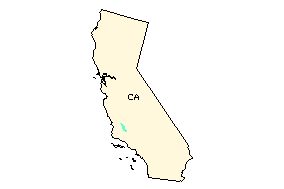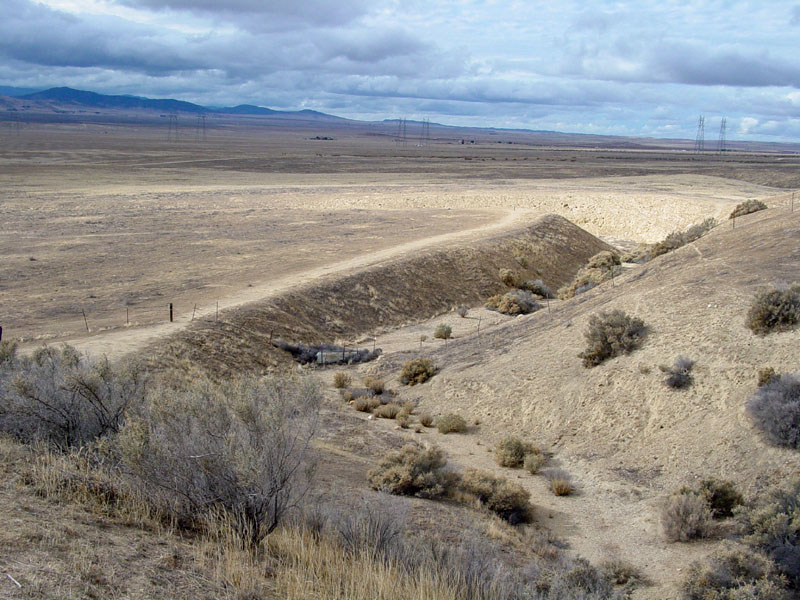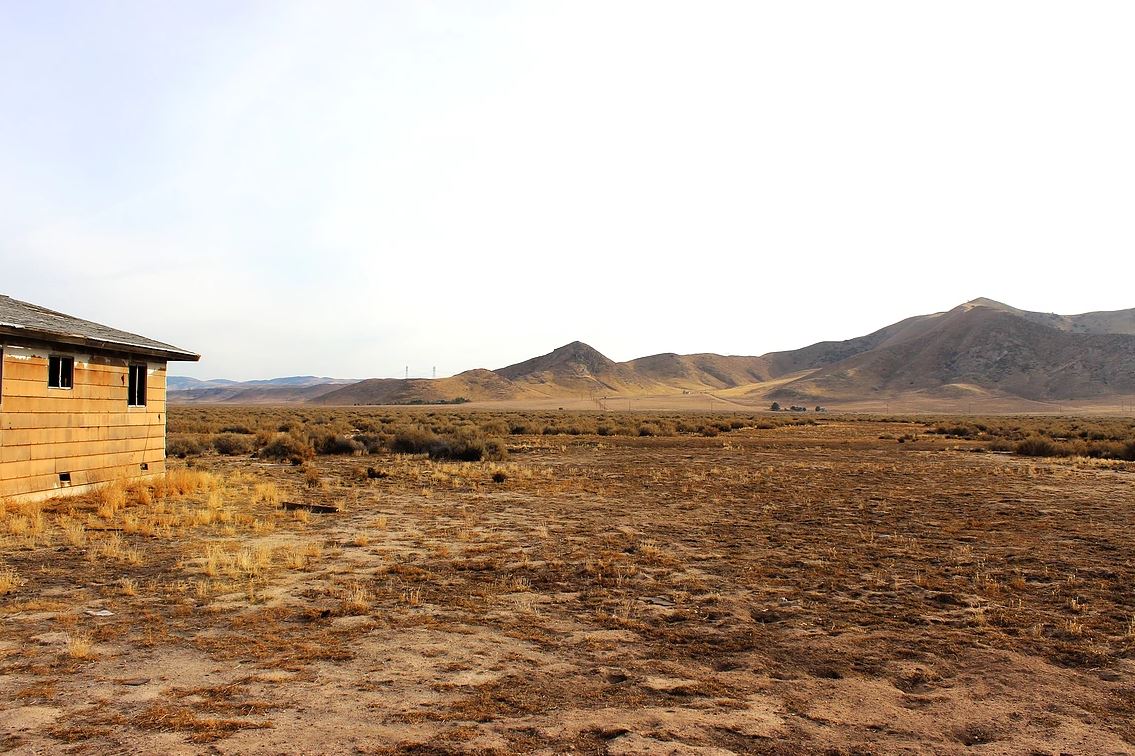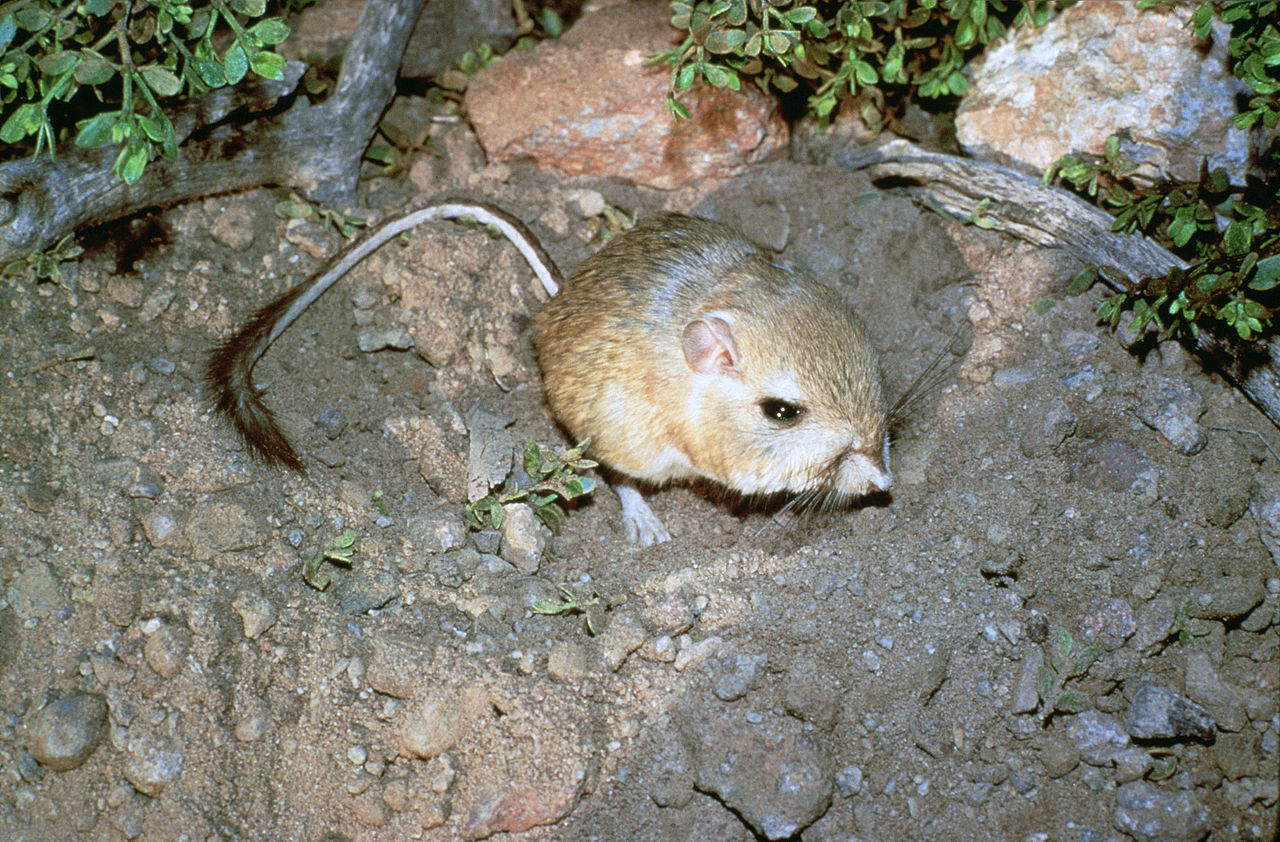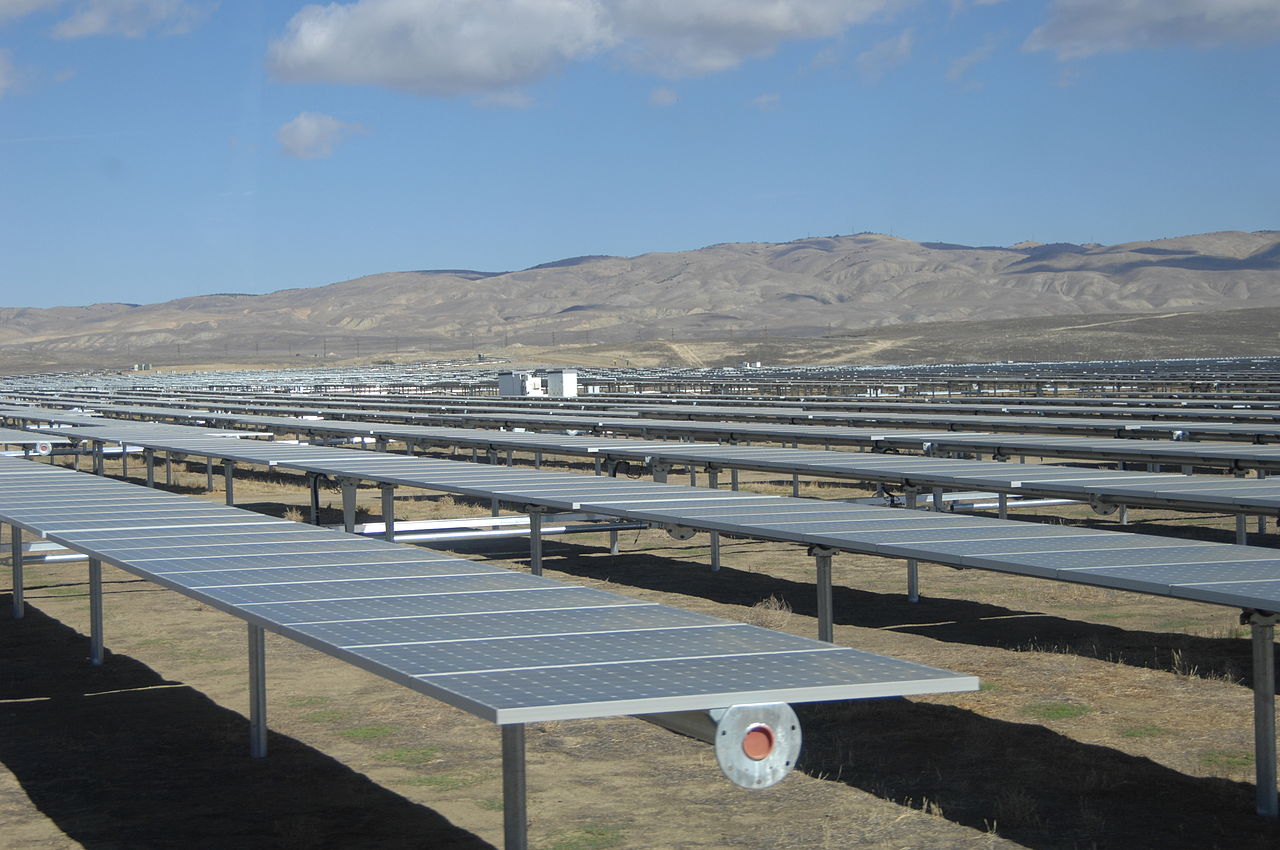Carrizo Plain
The Carrizo Plain is a large enclosed grassland plain, approximately 50 miles long and up to 15 miles across, in southeastern San Luis Obispo County, California, about 100 miles northwest of Los Angeles. It contains the 246,812 acre Carrizo Plain National Monument, and it is the largest single native grassland remaining in California. The San Andreas Fault bisects it it.
The Colony of Calsahara is located entirely within the plain.
Geography and geology
The plain extends northwest from the town of Maricopa, following the San Andreas Fault. Bordering the plain to the northeast is the Temblor Range, on the other side of which is the California Central Valley. Bordering the plain to the southwest is the Caliente Range. The community of California Valley is on the northern part of the plain. The average elevation of the plain is about 2,200 feet (670.6 m). Soda Lake, a 3,000-acre (12 km2) alkaline lake, is in the center of the plain with the popular Painted Rock containing Chumash and Yokut rock art nearby. As the central depression in an enclosed basin, Soda Lake receives all of the runoff from both sides of the plain. At 5,106 feet (1,556 m), Caliente Mountain, southwest of the plain, stands as the highest point in San Luis Obispo County. The climate type of the Carrizo Plain is semi-arid grassland. No trees grow there and the annual rainfall is around 9 inches (230 mm) per year.
The Carrizo Plain is an easily accessible place to see surface fractures of the San Andreas Fault; they are clearly visible along the eastern side of the plain, at the foot of the Temblor Range. They are best seen in early morning and evening light, when shadows enhance the topography. In addition to its spring wildflower displays, Carrizo Plain is famous for Painted Rock, a sandstone alcove adorned with pictographs created by the Chumash people around 2000 BC.
Wallace Creek
Wallace Creek is a small stream, draining into Soda Lake, that remains dry most of the year. It drains perpendicular to the San Andreas Fault, and the creek bed is currently offset by 425 ft (130 m) due to the movement of the fault. About 23 ft (7 m) of the displacement was created during the 1857 Fort Tejon earthquake. The current segment began forming 3,700 years ago. Sometime between 1540 and 1630 A.D., the creek was offset by about 40.6 feet (12.4 m) feet in an even larger earthquake.
Two other older creek beds lie 1,560 and 1,310 ft (475 and 399 m) northwest along the San Andreas Fault. The first creek bed was created around 13,000 years ago when climate change formed the creek on a large active alluvial fan. The second bed was created about 11,000 years ago.
The creek has been carefully studied by geologists to find a correlation between the offset and historical events, such as earthquakes, that have occurred along the San Andreas Fault. Although Wallace Creek is not the only creek that has been offset by the San Andreas Fault, it is the most spectacular.
History
California Valley is believed to have been visited by Native Americans passing through to the sacred site at Painted Rock, but no permanent Indian settlement existed due to a lack of easily accessible water. During the time California was controlled by Spain as the Viceroyalty of New Spain, California Valley was a Spanish land grant, the El Chicote Ranch, that was used for seasonal cattle raising. In 1848, with the Treaty of Guadalupe Hidalgo, the entire state was ceded to the United States of America.
During the early days of pioneer settlement in the western states, outlaws used California Valley as a remote hiding area where they could avoid the law. This tradition continued until at least the 1930s.
Land development scheme
In 1960, the original Spanish land grant was parceled out into over 7,200 2.5 acre (10,000 m2) sections by optimistic real estate developers. According to their own advertising fliers, these developers believed that the California State Water Project might bring water to the area. In 1963, an advertisement tried to attract land investors to purchase: “2½ full acres, fertile soil, not desert, as little as $20 down and only $20 per month, $1,795 (equivalent to $15,246 in 2020) full price.” As of 2020, the assessed value of most of these tracts is only around $3,000 each, meaning investors would have been better off putting their investment into a savings account.
After a more northerly route (closer to Highway 41/46) for the State Water Project was selected, many buyers lost heart, many properties were abandoned and the developers eventually went bankrupt. Several ranches and other developments built dirt or gravel airstrips and at least one paved runway was built and was at one time listed on aeronautical charts.
A few hundred people have built homes in this isolated area since, but the mass growth once promised never materialized. A Community Services District (CSD) was formed to deliver services to these residents, which includes trash collection, improvement of roads and the upkeep of a Community Center with a small public library.
Between 1960 and 2000, refuse and a number of old cars were dumped in the California Valley area, much of it by local residents, posing serious environmental issues. In 2006, a combined effort by the California Highway Patrol, California Department of Motor Vehicles, San Luis Obispo County Code Enforcement, and local businesses worked together to remove abandoned vehicles and accumulated trash.
In 2011, San Luis Obispo County attempted to sell off 415 2.5 acre lots for $1.9 million, but the county was unsuccessful.
Animal life
The Carrizo Plain is home to 13 species listed as endangered either by the state or federal government, the largest concentration of endangered species in California. Some of these species include the San Joaquin kit fox, the San Joaquin antelope squirrel, the blunt-nosed leopard lizard, the giant kangaroo rat, greater and lesser sandhill cranes, and the California condor.
The tule elk, pronghorn, black-tailed jackrabbit, western coyotes, and Le Conte's thrasher all also make their homes in the Carrizo Plain. The hotter climate and ecology of Carrizo Plain allows the Le Conte's thrasher of the Southwestern United States to have a small disjunct range farther north than normal.
- San Joaquin kit fox – a small nocturnal subspecies of the kit fox that was formerly common throughout the San Joaquin Valley but has recently become endangered.
- Blunt-nosed leopard lizard – a small, 3–5 inch gray to brown lizard with large dark spots and cream-colored cross bands. It has a broad, triangular shaped head and is endemic to California. It inhabits the grasslands and alkali flats of the San Joaquin Valley and the surrounding foothills and valleys.
- Giant kangaroo rat – the largest of all kangaroo rats. The giant kangaroo rat is also endemic to California and now only occupies about 2% of its original range, making it critically endangered.
- San Joaquin antelope squirrel – a light tan squirrel with a white belly and a white stripe down its back and sides. Most of its habitat is used for agriculture, making the Carrizo Plain the habitat for most of the remaining population.
Solar farms
The remote Carrizo Plain's status as one of the sunniest places in the state was exploited by the solar power industry from 1983 to 1994. This was the largest photovoltaic array in the world, with 100,000 of the 1-by-4-foot photovoltaic arrays producing 5.2 megawatts at its peak. The plant was originally constructed by the Atlantic Richfield oil company (ARCO) in 1983. The Carrizo Solar Corporation bought the facilities from ARCO in 1990, but the solar plant never became competitive with fossil fuel-based energy production. The Carrizo Solar Company dismantled its 177-acre (0.7 km2) facility in the late 1990s.
In October 2007, the Palo Alto company Ausra filed an application for a 177 MW Carrizo Energy Solar Farm (CESF) on 640 acres adjacent to the previous ARCO site. The solar field would have operated daily from sunrise to sunset. Typical operating hours for the CESF would have been approximately 13 hours per day, or an average of 4,765 hours per year. In November 2009, the project was canceled.
On 14 August 2008, Pacific Gas and Electric Company announced agreements to buy the power from two proposed photovoltaic plants in the Carrizo Plain: Topaz Solar Farm and High Plains Ranch, with a combined peak power of 800 MW. As of November 2014 Topaz Solar Farm is operational, with peak power of 550 MW.
In October 2013, the California Valley Solar Ranch became operational. It is a 250 megawatt photovoltaic power plant on the Carrizo Plain, northeast of California Valley. The project was constructed on 1,966 acres of a 4,365-acre site of former grazing land. It utilizes high-efficiency, crystalline PV panels designed and manufactured by SunPower. The project includes up to 88,000 SunPower solar tracking devices to hold PV panels that track the sun across the sky.
